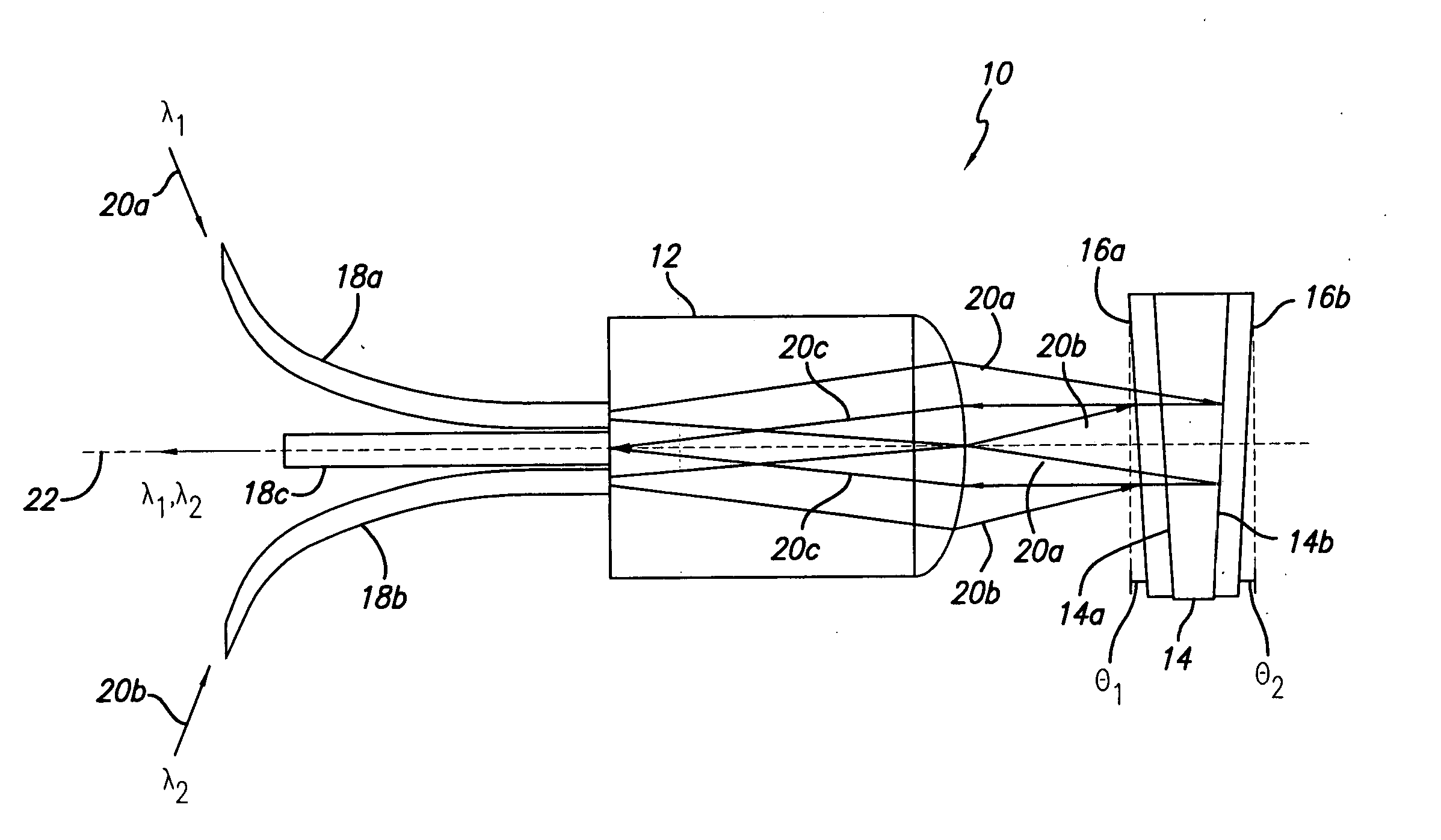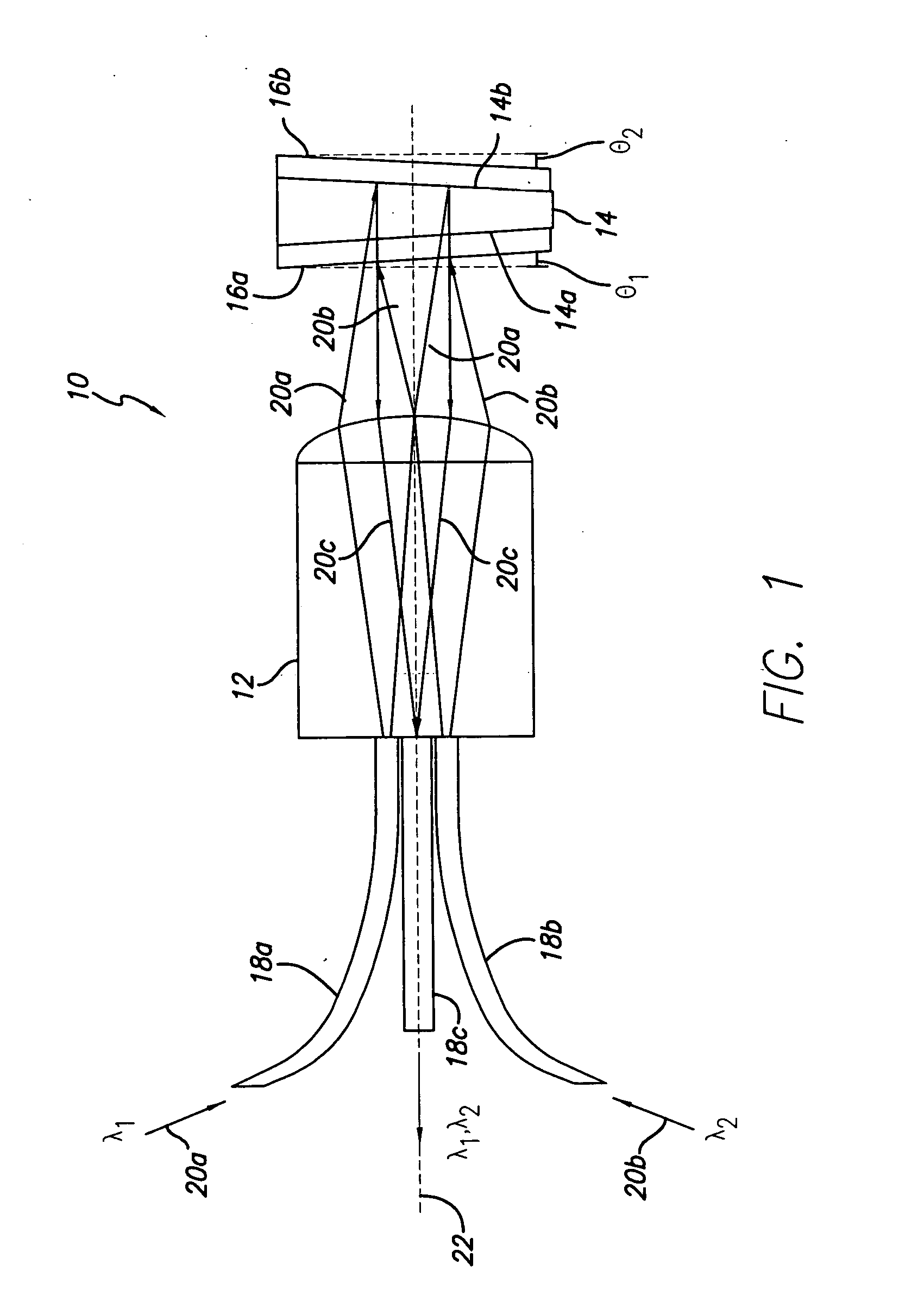Fiberoptic wavelength combiner
a wavelength combiner and fiberoptic technology, applied in the field of fiberoptic telecommunications, can solve the problems of significant weight, shock and vibration, and relative large devices, and achieve the effects of less weight, less shock and vibration, and small siz
- Summary
- Abstract
- Description
- Claims
- Application Information
AI Technical Summary
Benefits of technology
Problems solved by technology
Method used
Image
Examples
Embodiment Construction
[0017] Reference is now made in detail to a specific embodiment of the present invention, which illustrates the best mode presently contemplated by the inventors for practicing the invention. Alternative embodiments are also briefly described as applicable.
[0018] A fiberoptic wavelength combiner, utilizing a single collimator, serves the purpose of combining two different wavelengths into one fiber. One implementation of the device is shown in the sole FIGURE. Based on the disclosure herein, it will be readily apparent that other embodiments may also be envisioned.
[0019] The device 10 comprises a lens 12, a wedged mirror 14 having a first surface coating 16a on its front surface 1-4a and a second surface coating 16b on its rear surface 14b, and three fibers 18a, 18b, and 18c.
[0020] Light 20a, 20b of two different wavelengths, λ1 and λ2, respectively, enters the device 10 via optical fibers 18a and 18b. The fibers 18a, 18b are attached to the lens 12, such as by using known laser ...
PUM
 Login to View More
Login to View More Abstract
Description
Claims
Application Information
 Login to View More
Login to View More - R&D
- Intellectual Property
- Life Sciences
- Materials
- Tech Scout
- Unparalleled Data Quality
- Higher Quality Content
- 60% Fewer Hallucinations
Browse by: Latest US Patents, China's latest patents, Technical Efficacy Thesaurus, Application Domain, Technology Topic, Popular Technical Reports.
© 2025 PatSnap. All rights reserved.Legal|Privacy policy|Modern Slavery Act Transparency Statement|Sitemap|About US| Contact US: help@patsnap.com


